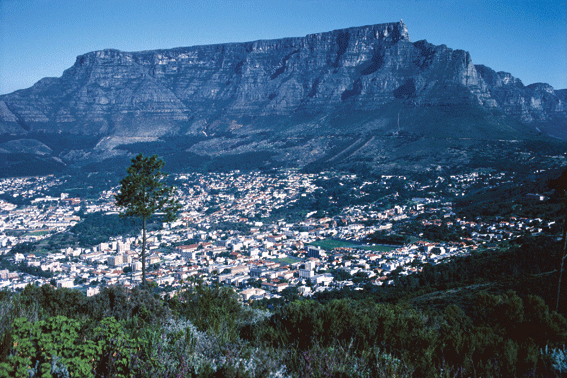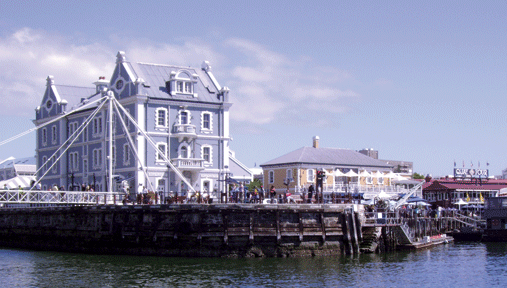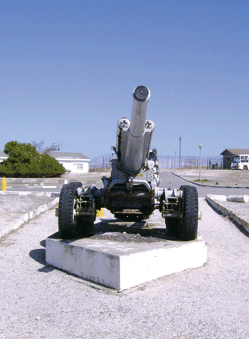
Travel
Cape Town
Redefining Beauty

“Am I really in Africa?” This was the thought that came to my mind while I was sipping coffee in a chic cafe along Cape Town’s Victoria & Alfred Waterfront, just as a baby seal playfully swam past. The setting would not be out of place in Marseille or Malta. The feel of the place was positively Mediterranean.
By: Rufaida Javid
The ‘Mother City’, as Cape Town is known, is the place where the first world and third world collide. While exclusive suburbs like Constantia are reminiscent of California or Sydney, they are just a few minutes drive from deprived townships like Khayelitsha and Langa.
Many great cities of the world have man-made monuments that come to symbolize them, like London’s Big Ben, Paris’s Eiffel Tower and Delhi’s Qutub Minar. But Cape Town is blessed with a natural monument like no other - “Table Mountain”. Indeed, it is as flat as a table, and the locals also have an interesting name for the cloud cover that descends on the mountain from time to time: the table cloth!
This magnificent mountain stands like a sentinel, watching over the city. You can see it from almost everywhere in Cape Town, despite the high-rises that are coming up at an alarming rate. Whatever you do here, don’t miss the chance to take the cable car to the top of the mountain. The easiest way of doing this is from the Lower Cable Station on Tafelberg Road. The cable ride, and the view from the top will take your breath away. A two-way trip will cost you 150 rands (about SR75) and is worth every cent. Don’t forget to take some warm clothing along as the weather patterns at the top of the mountain are unpredictable and it can get really cold and misty up there, even in summer. (We learnt this the hard way).
If you are the more adventurous kind, then you can climb your way up, along the Platteklip (Afrikaans for ‘Flat Stone’) Gorge. The route will take you about 3 hours, and it is safer to come back down in the cable car. On the way up, you will see little creatures called ‘dassies’. The funny thing about them is that they resemble elephants. In fact, it has been scientifically proven that their DNA is extremely similar to that of the elephants.
One wonders what was the reaction of the city’s founding father, Jan van Riebeeck, on seeing Table Mountain. He landed his ships Drommedaris, Reijger and Goede Hoop on April 6, in 1652. Riebeeck had been sent by the Dutch East India Company to take command of the first Dutch settlement in the area and establish a way-station for ships of the Company heading to India and the Far East. Over the next ten years, he built a fort and improved anchorage at the natural harbour at Table Bay.
Even by South Africa’s high standards, Cape Town is an extraordinarily beautiful city. It has some stunning beaches along the Atlantic coast. But only brave souls enter the water, as it is ice-cold thanks to the Atlantic current. On the other side of the Cape, along False Bay, the beaches are much warmer; these beaches are more popular with swimmers and surfers. You must also consider a drive to Stellenbosch, a town about 50km away, made famous by a university of the same name and the vineyards of the Western Cape.
While Cape Town is safe compared to other South African cities, especially Johannesburg, it pays to take precautions. Roaming around on the streets after dark is not safe anywhere, except perhaps at the V&A Waterfront.
Cape Town’s population is the most diverse in South Africa, with people divided almost 50-50 between blacks and non-blacks. Many here form what is known as ‘coloreds’ – people of mixed descent. Among the coloreds are the Cape Malays, who are the descendents of slaves brought in by the Portuguese from present-day Indonesia and Malaysia. Unlike people of Indian origin in South Africa who speak English as their first language, nearly all the Cape Malays speak Afrikaans as their mother tongue.
Almost all the Cape Malays are Muslims, and have a culture and identity all their own. This is illustrated in the beautiful district of Bo-Kaap (Afrikaans for ‘Upper Cape’). The most striking thing about Bo-Kaap are the houses – all painted in shocking bright colors. One of the residents told me that each homeowner paints the house a different hue from his neighbor at the end of Ramadan each year. “For example, if this year my house is painted purple, and my neighbor’s orange, next year I may paint it red and he may paint it mauve,” Adil said.
While you are wandering around this unique district, don’t forget to check out the small but very interesting museum on Wale Street. It was formerly the house of a prominent 19th century Muslim family and has now been converted into a museum that documents the history of the Cape Malays in South Africa. The other thing to do in Bo-Kaap is to try the star of Cape Malay cuisine – bobotie (curried beef cooked with eggs). You can get a plateful for as little as 25 rands (about SR12). It is best washed down with a chilled cold drink.
No visit to Cape Town, of course, is complete without a trip to Robben Island. This is where the awful, racist Apartheid regime sent its political opponents, who were then held for long periods of time in inhumane conditions. The legendary Nelson Mandela was incarcerated here for 18 of his 28 years in prison. The authorities have left the entire island intact, just as it was when it was officially closed down after the end of Apartheid.
You can start by visiting the Robben Island Museum at the V&A Waterfront to get a good historical perspective. This is where you can also book the ferry ride to and from the island. The trip costs 150 rands (about SR75) return. Remember to book the tickets in advance, as demand often outstrips supply. Interestingly, the two ferries that are used to take the visitors to the island and back are the very same boats the Apartheid regime used to ferry prisoners. Once you reach the island, you will be given a guided tour. All the Robben Island guides are ex-prisoners, who have spent a lot of time in the jail. The entire experience will leave you shaken at man’s capacity for brutality against his fellow humans.
Getting Around Cape Town
Car is king in South Africa. Public transport in Cape Town is avoidable. Your best way around town has to be taxi. Your hotel can help you negotiate a half or full day city tour. If you have an international driving license, and are planning to stay for a while, you can also consider renting a car (a medium-size Japanese saloon will cost you about SR700-900 a week). Note: like in most countries ruled at one time by Britain, people drive on the left hand side in South Africa.
Where To Stay
We stayed at the three-star Ritz Hotel at Sea Point, which at 600 rands (about SR 300) with breakfast, was good value for money. If you are staying here, ask for a room in the upper floors, as the view of Table Bay from the hotel is fantastic.
Visas
Citizens of most countries need a visa to travel to South Africa. Contact the nearest embassy/consulate for details.